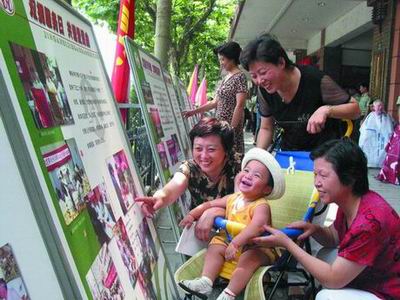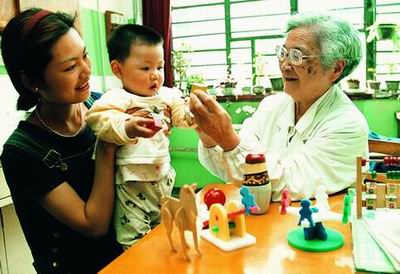Natural Changes in Population

Shanghai is the first area in China to report a
negative population growth rate. The city has registered a negative population
growth rate for 11 consecutive years since 1993. In 2003, the city's natural
population growth rate was -0.33%, with the birth rate reaching 0.43% and
mortality rate 0.76%.
Population

The size of population in Shanghai keeps growing. At
the beginning when Shanghai was turned into a city, it only had a population of
less than 100,000. By the time Shanghai was liberated in 1949, the city had a
population of only 5.2 million. By the end of 2003, Shanghai's population of
residents with permanent resident papers had grown to 13.4177 million,
representing 1% of China's total. The population of long-term residents reached
17.11 million, 860,000 more than in the previous year. In 2003, the average
population density in the city stood at 2,116 people per square
kilometer.
Changes In The City's Population
Year-end Population (Unit: 10,000
people)
Birth Rate (%)
Mortality Rate (%)
Natural Growth Rate (%)
1990
1283.35 1.02 0.67 0.35
1991
1287.20 0.78 0.67 0.11
1992
1289.37 0.73 0.71 0.02
1993
1294.74 0.65 0.73 -0.08
1994
1298.81 0.59 0.73 -0.14
1995
1301.37 0.55 0.75 -0.20
1996
1304.43 0.52 0.75 -0.23
1997
1305.46 0.49 0.73 -0.24
1998
1306.58 0.47 0.78 -0.31
1999
1313.12 0.50 0.73 -0.23
2000
1321.63 0.53 0.72 -0.19
2001
1327.14 0.43 0.70 -0.27
2002
1334.23 0.47 0.73 -0.26
2003
1341.80 0.43 0.76 -0.33
Population And Population Density (year-end of
2002)
District/County
Population (10,000)
Population Density (person/sq.km)
Huangpu District
61.89
49845
Luwan District 32.84 40793
Xuhui District 88.61 16181
Changning District 61.71 16113
Jing'an District
32.07
42084
Putuo District 84.53 15417
Zhabei District 70.79 24192
Hongkou District
79.22
33741
Yangpu District 108.17 17812
Pudong District 176.69 3380
Minhang District
75.12
2021
Jiading District
51.18
1115
Baoshan District
85.43
2057
Jinshan District
52.71
899
Songjiang District 50.68 838
Qingpu District 45.83 678
Nanhui District 69.91 1017
Fengxian District
50.87
740
Chongming County
63.54 610
Shanghai's Population
Structure In 2003 (%)
District/County Urban/Rural
Male/Female
District County Urban Rural Male Female
2003
95.2
4.8
77.6 22.4 50.3 49.7



